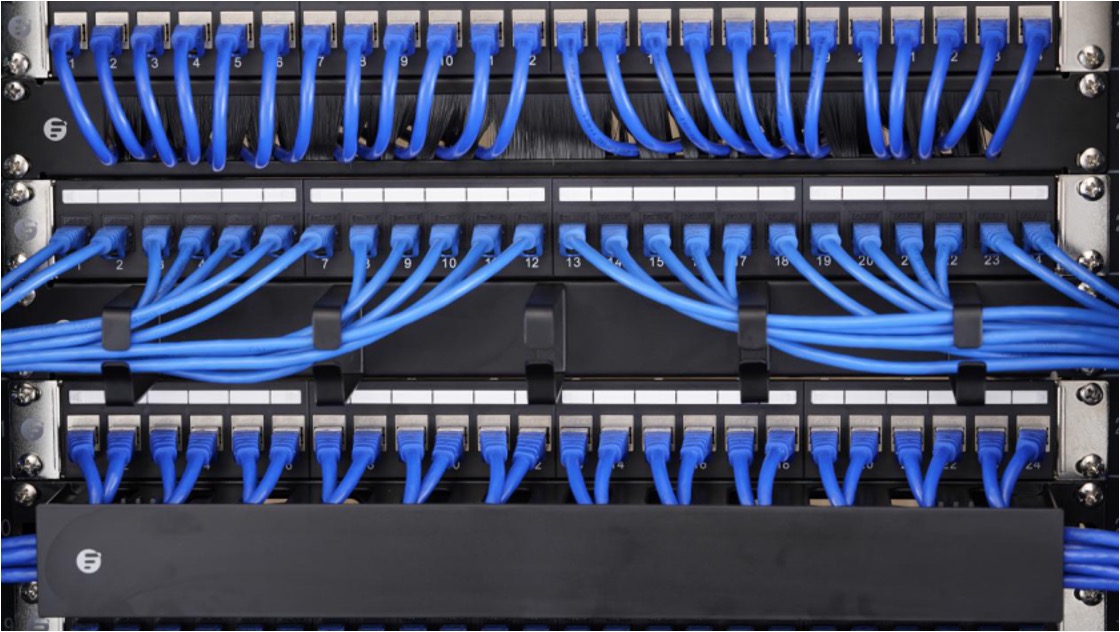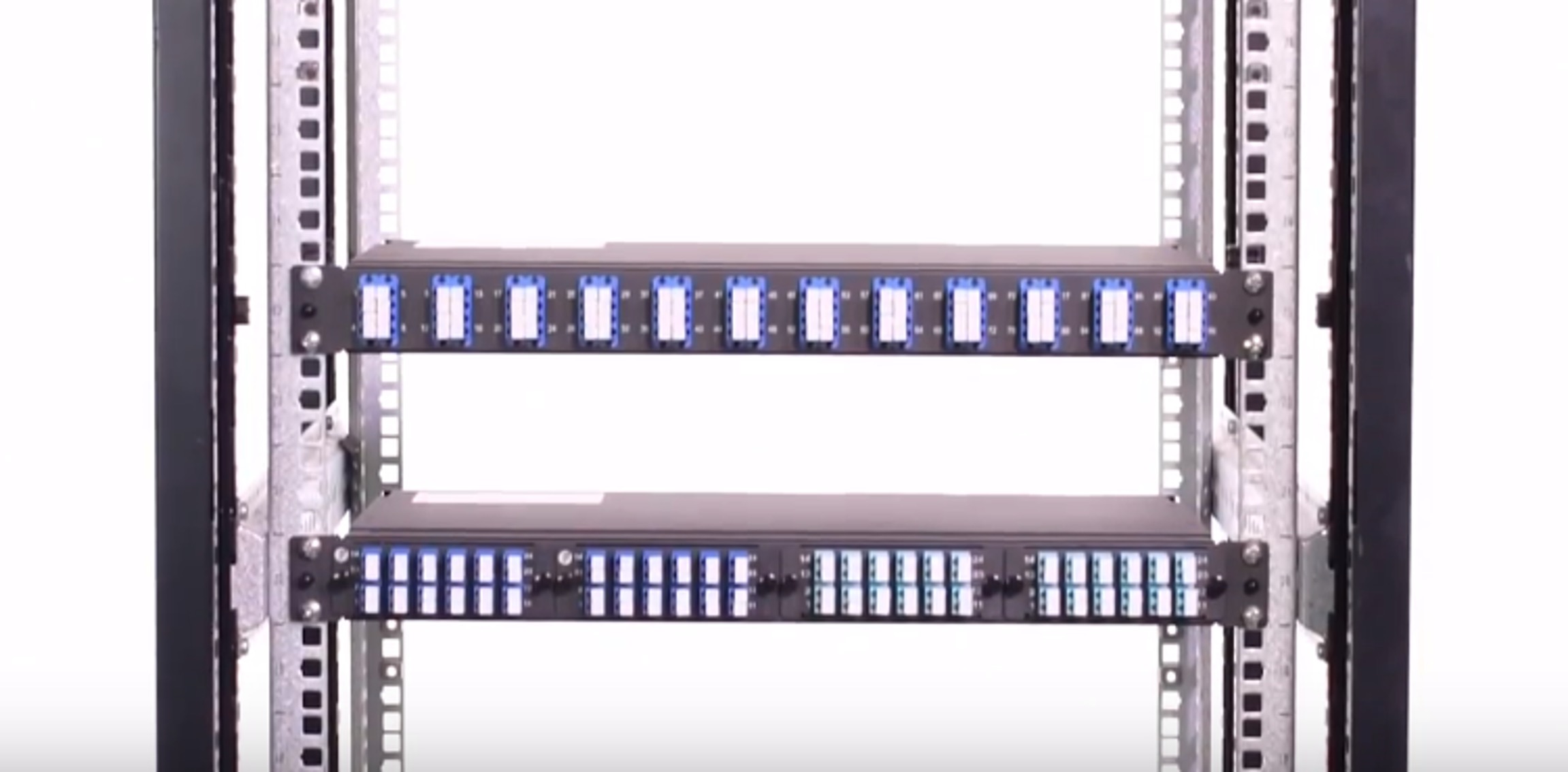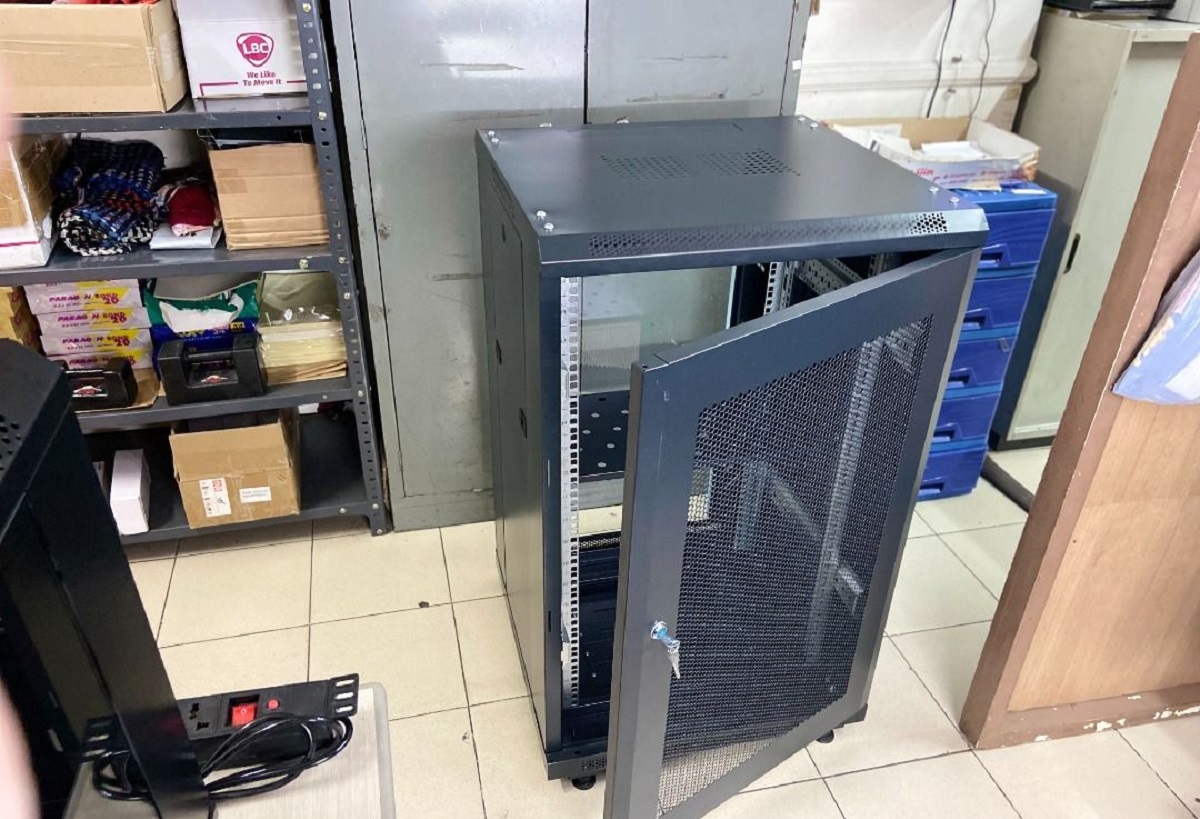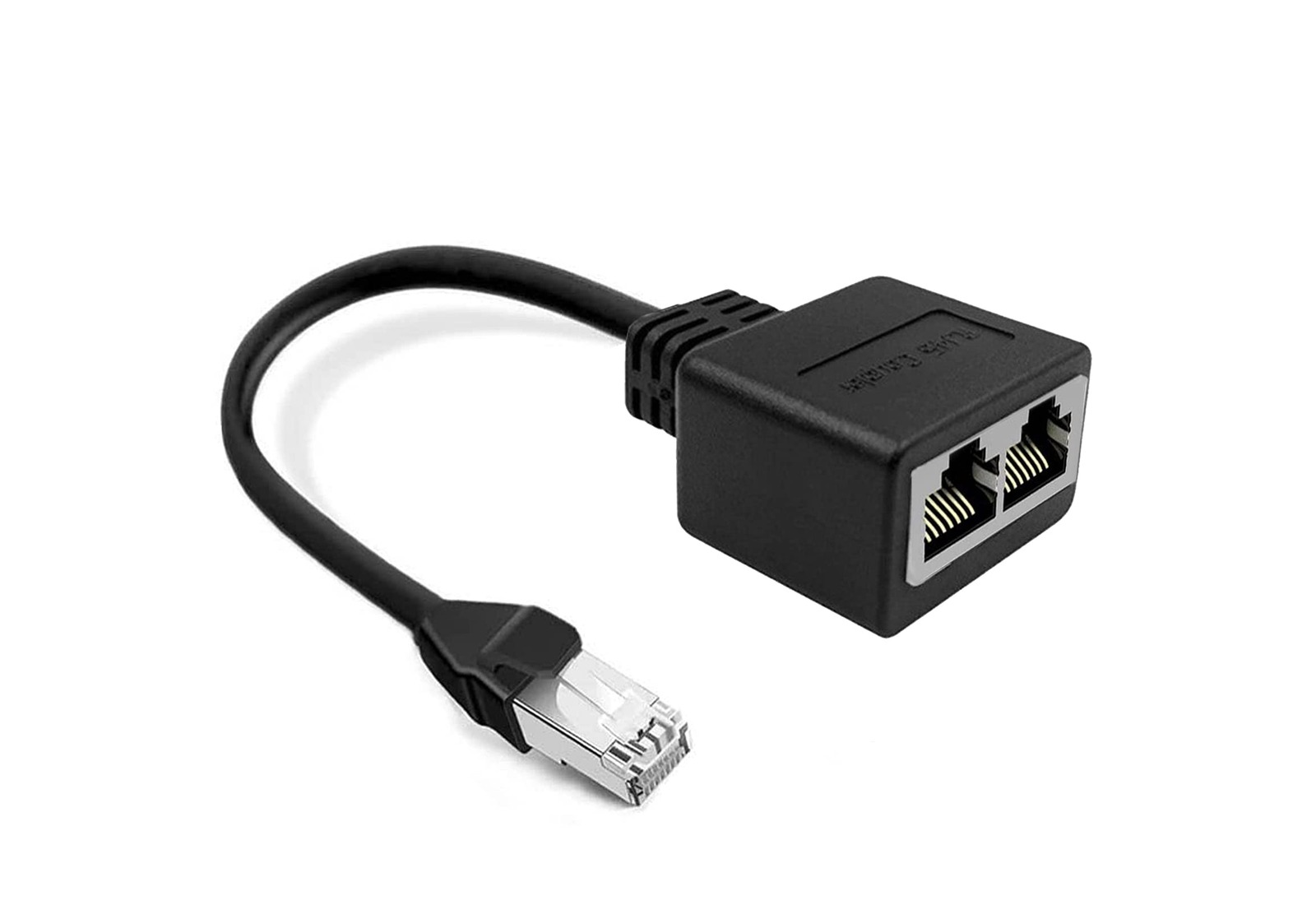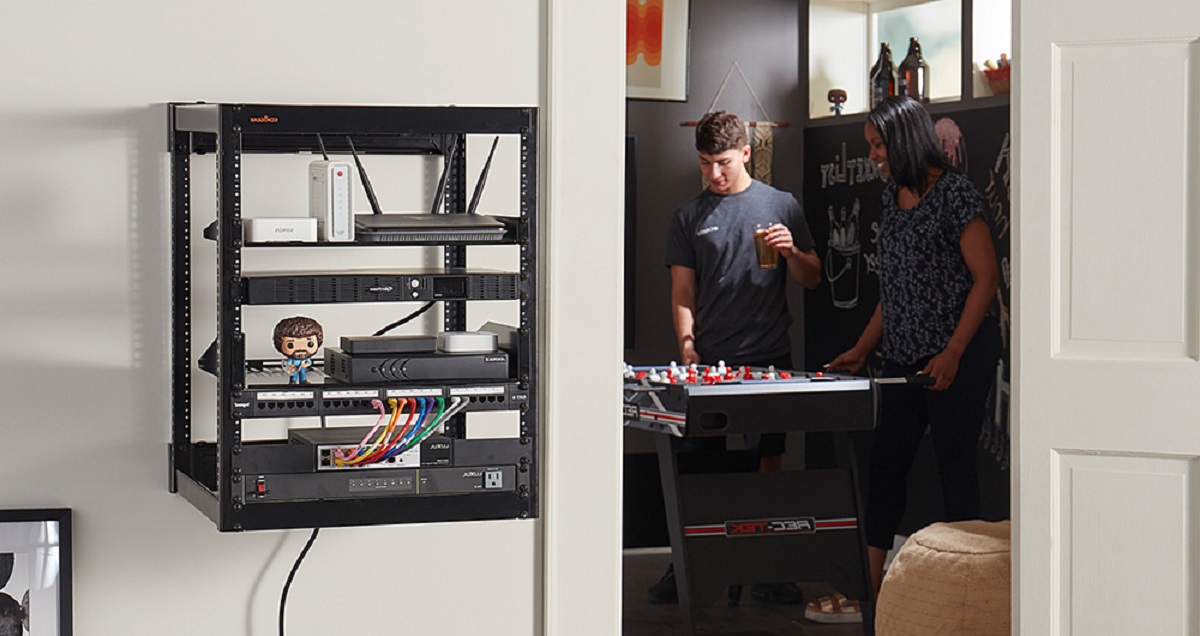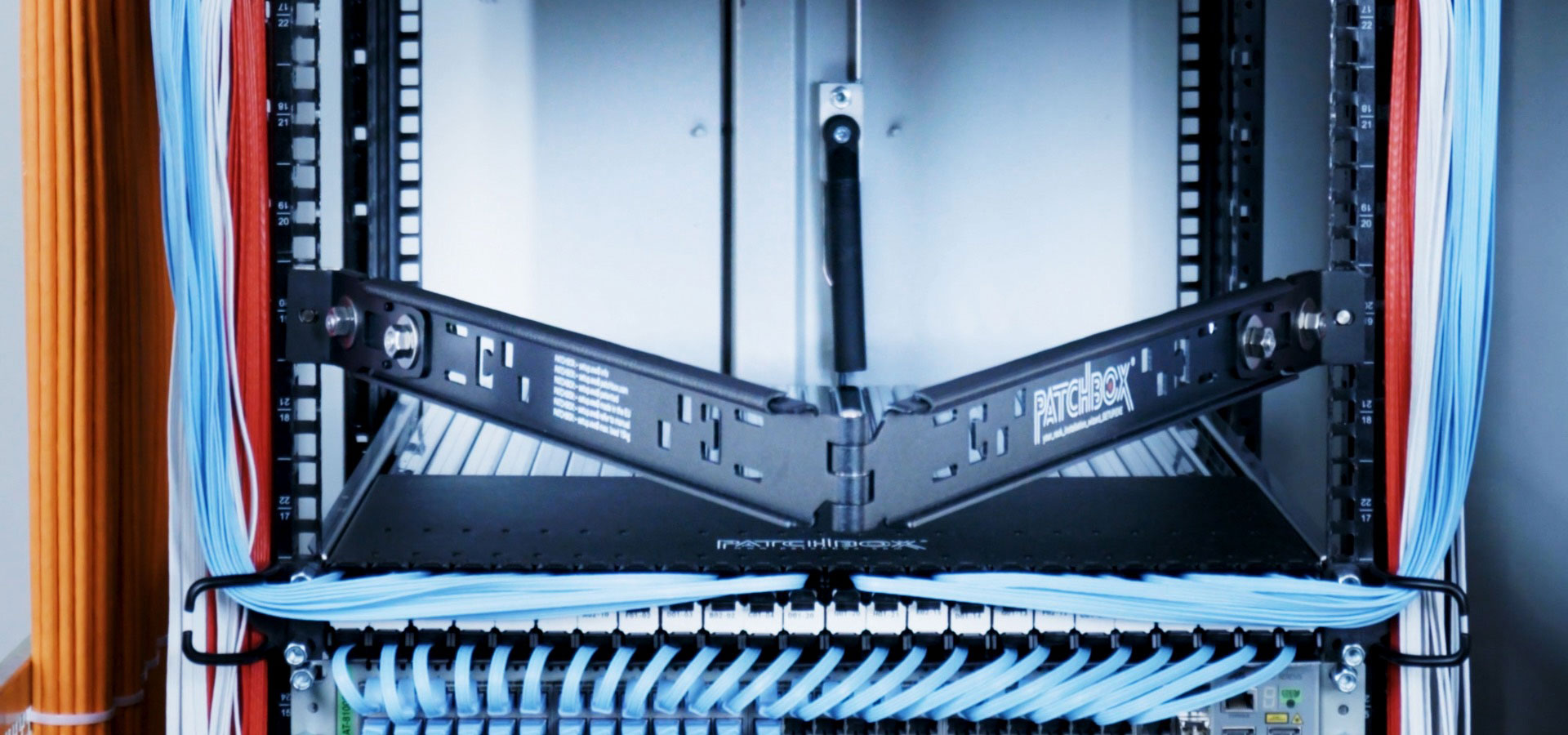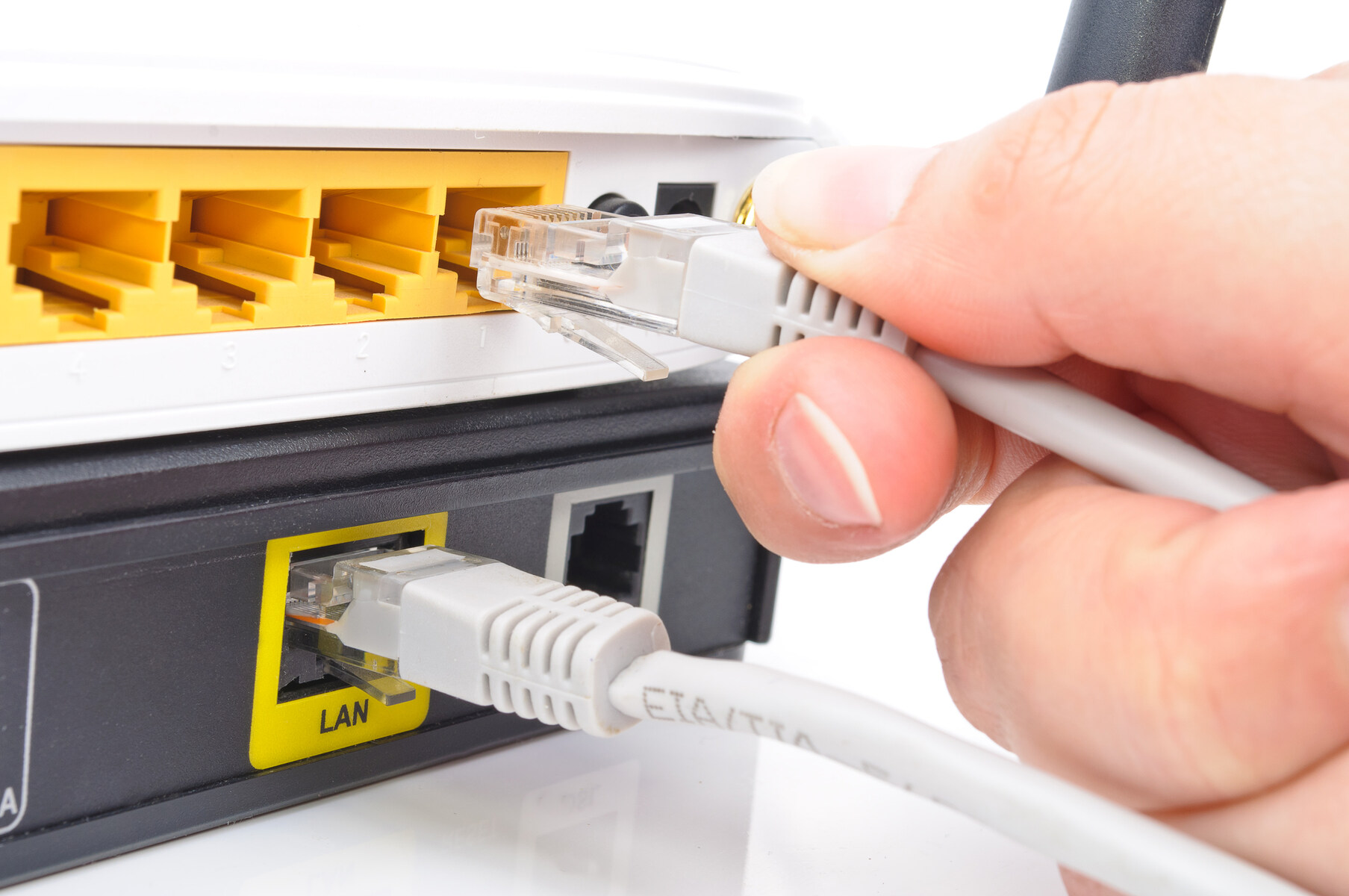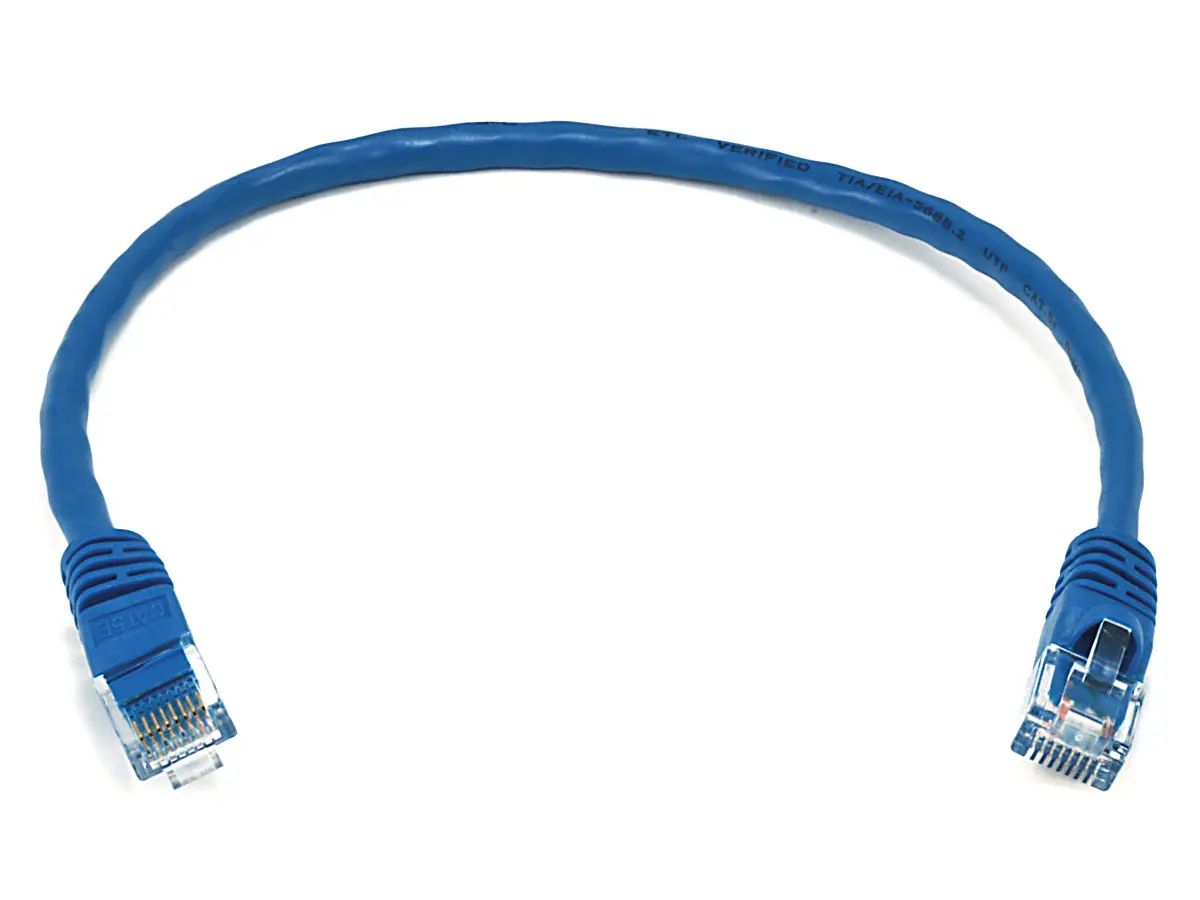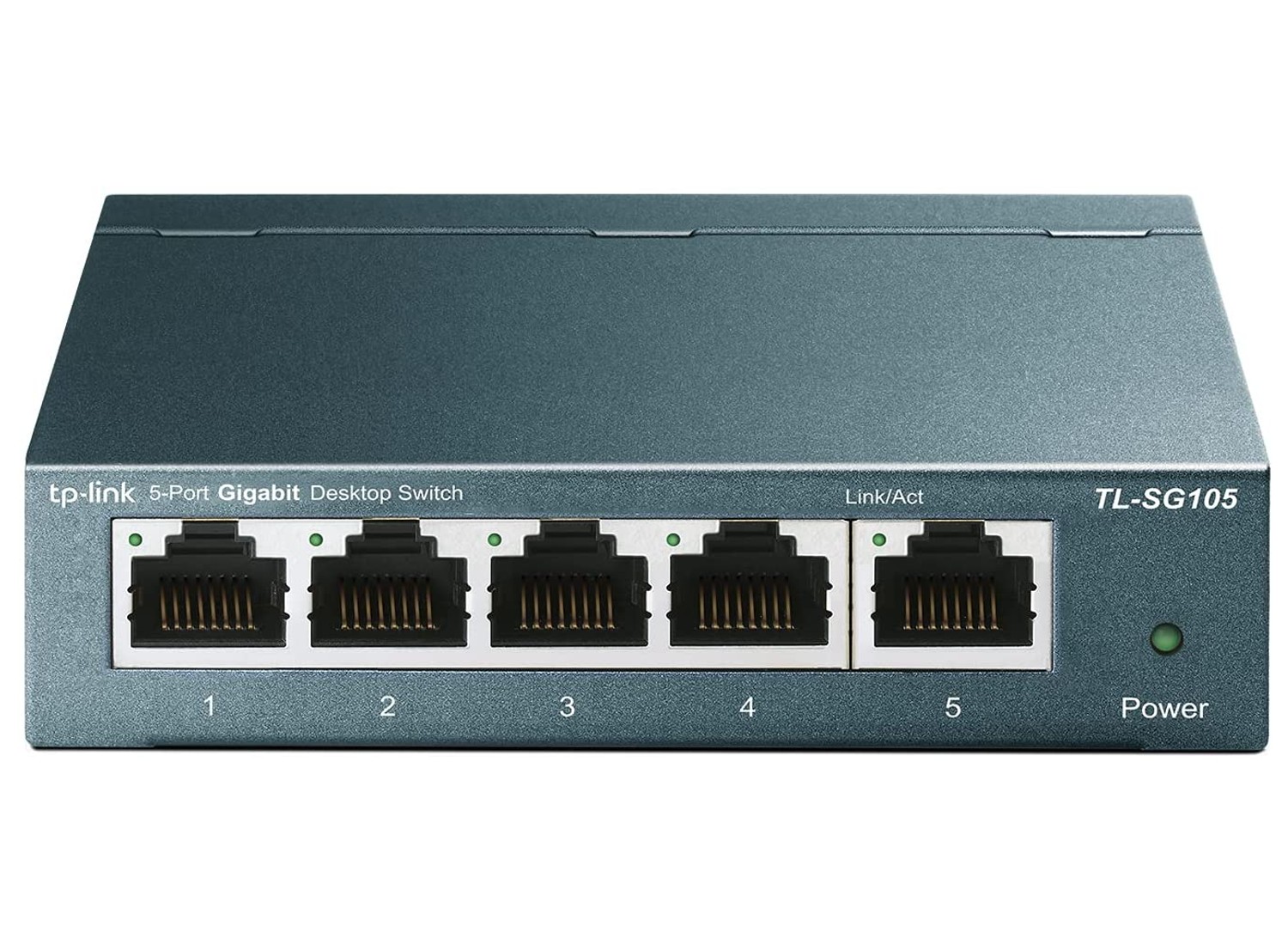Introduction
Setting up a network switch and patch panel is crucial for establishing a reliable and efficient network infrastructure. Whether you are creating a network for a small business, a home office, or a large enterprise, understanding the process of setting up these essential components is vital. In this guide, we will explore the step-by-step process of setting up a network switch and patch panel, from selecting the right equipment to testing and troubleshooting the connections.
A network switch serves as a central hub for connecting devices within a network, allowing them to communicate with each other. On the other hand, a patch panel provides a convenient and organized way to terminate network cables, making it easier to manage and troubleshoot connections. By setting up these components properly, you can ensure seamless communication and data transfer within your network.
In the following sections, we will delve into the intricacies of network switches and patch panels, discuss the factors to consider when choosing the right equipment, and provide a detailed guide on setting up and configuring these essential network components. Additionally, we will explore the crucial steps involved in installing and configuring the patch panel, as well as testing and troubleshooting the network connections to ensure optimal functionality.
By following this comprehensive guide, you will gain the knowledge and confidence to set up a network switch and patch panel effectively, laying the foundation for a robust and reliable network infrastructure. Let's embark on this journey to demystify the process of network setup and empower ourselves with the skills to create efficient and resilient networks.
Understanding Network Switches and Patch Panels
Network switches and patch panels are fundamental components of a structured cabling system, playing pivotal roles in the organization and functionality of a network. A network switch, often referred to as a switching hub, is a networking device that connects multiple devices within a local area network (LAN) and enables the seamless transmission of data between them. It operates at the data link layer of the OSI model, facilitating the efficient exchange of information among connected devices.
On the other hand, a patch panel serves as a central point for organizing and managing the termination of network cables. It provides a structured and easily accessible platform for connecting and routing incoming and outgoing cables, offering a convenient interface for monitoring, testing, and troubleshooting network connections. By utilizing a patch panel, network administrators can maintain a neat and organized cabling infrastructure, simplifying the process of identifying and rectifying connectivity issues.
Network switches come in various configurations, including unmanaged, managed, and stackable switches, each offering distinct features and capabilities. Unmanaged switches are plug-and-play devices that operate without the need for configuration, making them suitable for small-scale deployments. Managed switches, on the other hand, provide advanced functionality such as virtual LAN (VLAN) support, Quality of Service (QoS) features, and network management capabilities, offering greater control and flexibility in network operations. Stackable switches enable the creation of a unified and scalable network infrastructure by allowing multiple switches to be interconnected and managed as a single entity.
When it comes to patch panels, they are available in various configurations, including flat and angled designs, as well as different port densities to accommodate specific cabling requirements. Patch panels are commonly used in data centers, server rooms, and telecommunications facilities, where the organization and management of network connections are of paramount importance. By terminating incoming and outgoing cables onto the patch panel, network technicians can streamline the process of connecting devices and troubleshooting connectivity issues, thereby enhancing the overall reliability and efficiency of the network.
Understanding the functions and capabilities of network switches and patch panels is essential for creating a robust and well-organized network infrastructure. In the subsequent sections, we will delve deeper into the process of selecting the right equipment and setting up these crucial network components to ensure optimal performance and reliability.
Choosing the Right Equipment
When setting up a network switch and patch panel, selecting the appropriate equipment is paramount to the overall performance and functionality of the network infrastructure. The first step in this process is to assess the specific requirements of the network, taking into account factors such as the number of devices to be connected, the expected data traffic, and the scalability needs of the network.
For network switches, the choice between unmanaged, managed, or stackable switches depends on the complexity and size of the network. Small office or home networks may benefit from the simplicity and cost-effectiveness of unmanaged switches, which are easy to set up and require minimal maintenance. In contrast, larger networks with the need for advanced features and centralized management may opt for managed switches, allowing for greater control over network traffic, security, and configuration. In environments where scalability and flexibility are paramount, stackable switches provide a seamless solution for expanding the network infrastructure while maintaining centralized management and control.
When it comes to patch panels, considerations such as the type of cabling infrastructure, port density requirements, and future expansion plans play a crucial role in selecting the right equipment. The choice between flat and angled patch panels depends on the specific installation requirements and the desired cable management approach. Additionally, the port density of the patch panel should align with the number of network connections to be accommodated, ensuring that there is ample room for current and future network expansion.
Another critical aspect of choosing the right equipment is ensuring compatibility and adherence to industry standards. It is essential to select network switches and patch panels that comply with relevant standards such as IEEE for switches and TIA/EIA for cabling and patch panels. This ensures interoperability, reliability, and compliance with best practices, contributing to the overall stability and performance of the network infrastructure.
Furthermore, considerations for power efficiency, security features, and warranty and support options should also be factored into the equipment selection process. Energy-efficient switches contribute to cost savings and environmental sustainability, while robust security features such as access control, port security, and secure management interfaces enhance the overall network security posture. Additionally, evaluating the warranty coverage and support offerings from the equipment vendors is crucial for addressing potential issues and ensuring continuous network reliability.
By carefully evaluating these factors and selecting the right network switches and patch panels, organizations can lay a solid foundation for a resilient, scalable, and high-performance network infrastructure. In the subsequent sections, we will delve into the practical steps involved in setting up the chosen equipment and configuring the network switch and patch panel to ensure seamless connectivity and optimal performance.
Setting Up the Network Switch
Once the appropriate network switch has been selected based on the specific requirements of the network, the next step involves setting up the switch to facilitate seamless connectivity and efficient data transmission. The setup process typically involves physical installation, configuration, and integration of the switch into the existing network infrastructure.
The first step in setting up a network switch is to identify an optimal location for its installation. This location should provide adequate ventilation, accessibility for maintenance, and proximity to the network devices it will connect. Additionally, consideration should be given to power source availability and environmental factors to ensure the longevity and optimal performance of the switch.
After determining the installation location, the network switch is mounted securely, either in a rack-mount configuration or a freestanding setup, depending on the specific deployment environment. Once physically installed, the switch is connected to the power source and the network devices using appropriate Ethernet cables, ensuring that the connections are secure and properly seated to avoid connectivity issues.
Following the physical installation, the switch is then configured to align with the network requirements. This involves accessing the switch’s management interface using a web browser or dedicated management software and setting parameters such as VLAN configuration, Quality of Service (QoS) policies, port settings, and security features. Managed switches offer a wide array of configuration options, allowing for fine-tuning of network operations to optimize performance, security, and resource allocation.
For unmanaged switches, the setup process is simplified, as these devices typically operate in a plug-and-play manner without the need for extensive configuration. However, verifying connectivity and ensuring that network devices can communicate effectively through the switch is essential to confirm proper functionality.
Once the switch is physically installed and configured, it is integrated into the network infrastructure, allowing devices to communicate with each other and access network resources. Network administrators should perform thorough testing to validate the connectivity, data transmission, and adherence to the configured settings, ensuring that the switch operates as intended and meets the network’s performance expectations.
By following these steps and guidelines, organizations can effectively set up a network switch, creating a robust and efficient networking environment that supports seamless communication and data exchange. In the subsequent section, we will explore the process of installing and configuring the patch panel, complementing the functionality of the network switch and contributing to a well-organized and manageable cabling infrastructure.
Installing and Configuring the Patch Panel
Installing and configuring a patch panel is a critical step in creating an organized and easily manageable cabling infrastructure. The patch panel serves as a central termination point for network cables, providing a structured and accessible platform for connecting network devices and facilitating efficient network operations.
The installation process begins with selecting an appropriate location for the patch panel, typically within a network rack or enclosure. The chosen location should allow for easy access, cable management, and future expansion. Once the location is determined, the patch panel is securely mounted, ensuring that it is properly aligned and anchored to support the weight of the connected cables.
After the physical installation, network cables are terminated onto the patch panel, following industry-standard wiring schemes such as T568A or T568B for Ethernet connections. Careful attention should be given to cable management, ensuring that the terminated cables are neatly organized and labeled for easy identification. Proper cable management minimizes the risk of cable damage, simplifies troubleshooting, and enhances the overall aesthetics of the cabling infrastructure.
Configuring the patch panel involves verifying the connectivity of the terminated cables, ensuring that each connection is secure and properly seated within the panel. Additionally, labeling each port on the patch panel according to the corresponding network device or endpoint facilitates easy identification and troubleshooting in the future. This labeling process streamlines maintenance and reduces the time required to isolate and address connectivity issues.
Furthermore, implementing a structured and logical port numbering scheme on the patch panel enhances the overall organization and simplifies the process of tracking and documenting network connections. This scheme provides a clear reference for network technicians and administrators, allowing them to identify the physical location of network devices and the associated ports on the patch panel efficiently.
Once the patch panel is installed and configured, network technicians conduct thorough testing to validate the connectivity and functionality of the terminated cables. This testing process ensures that each network connection is operational and adheres to the specified wiring standards, minimizing the risk of connectivity issues and data transmission errors.
By following these installation and configuration procedures, organizations can establish a well-organized and efficiently managed cabling infrastructure, supported by the functionality and convenience of the patch panel. In the subsequent section, we will explore the crucial steps involved in testing and troubleshooting the network connections, ensuring the reliability and optimal performance of the network infrastructure.
Testing and Troubleshooting
Testing and troubleshooting network connections are essential steps in ensuring the reliability, performance, and integrity of the network infrastructure. By conducting thorough testing and addressing potential issues, network administrators can identify and rectify connectivity problems, validate the functionality of network components, and optimize the overall network performance.
One of the primary methods of testing network connections involves utilizing network testing tools such as cable testers, network analyzers, and continuity testers. These tools allow technicians to verify the integrity of network cables, assess signal strength and quality, and identify wiring faults or connectivity issues. By leveraging these testing tools, network administrators can ensure that the network connections meet industry standards and operate at optimal performance levels.
Additionally, network technicians conduct connectivity tests to validate the communication between network devices and the functionality of the network switch and patch panel. This involves verifying the transmission of data packets, assessing network latency, and confirming the proper operation of network services and applications. Through comprehensive connectivity tests, potential bottlenecks, latency issues, or communication errors can be identified and addressed, contributing to a more efficient and reliable network environment.
In the event of connectivity issues or network performance degradation, troubleshooting becomes essential to isolate and resolve the underlying problems. Troubleshooting network connections involves a systematic approach to identifying and addressing issues, starting with verifying physical connections, checking configuration settings, and assessing network traffic patterns. By analyzing network logs, monitoring network performance metrics, and conducting packet captures, network administrators can pinpoint the root causes of connectivity issues and implement targeted solutions.
Furthermore, documentation and labeling play a crucial role in troubleshooting network connections, as they provide a clear reference for identifying network devices, ports, and cable connections. Well-labeled patch panels, documented network diagrams, and comprehensive network documentation streamline the troubleshooting process, enabling network technicians to quickly locate and address connectivity issues without unnecessary delays or confusion.
By diligently testing and troubleshooting network connections, organizations can maintain a robust and reliable network infrastructure, minimizing downtime, optimizing network performance, and ensuring seamless communication and data transfer. In the subsequent sections, we will summarize the key insights and practical steps outlined in this guide, empowering network administrators and technicians with the knowledge and skills to set up, manage, and maintain efficient network switches and patch panels.
Conclusion
Setting up a network switch and patch panel is a foundational aspect of establishing a robust and efficient network infrastructure. By understanding the functions and capabilities of these essential components, selecting the right equipment, and following the proper installation and configuration procedures, organizations can create a well-organized and seamlessly connected network environment.
Network switches serve as the central communication hub, facilitating the exchange of data between network devices, while patch panels provide a structured platform for terminating and managing network cables. The selection of the appropriate network switches and patch panels is crucial, considering factors such as network size, scalability, and compliance with industry standards.
Once the equipment is chosen, the setup process involves physical installation, configuration, and integration into the network infrastructure. Proper cable management, labeling, and adherence to wiring standards are essential for creating an organized and easily maintainable cabling infrastructure.
Thorough testing and troubleshooting of network connections ensure the reliability and optimal performance of the network, allowing network administrators to identify and address connectivity issues, validate network functionality, and optimize network performance. By leveraging network testing tools and systematic troubleshooting approaches, potential connectivity issues can be efficiently resolved, contributing to a resilient and high-performing network environment.
In conclusion, the successful setup and management of network switches and patch panels are pivotal in establishing a reliable and efficient network infrastructure. By following the guidelines and best practices outlined in this guide, organizations can lay the groundwork for seamless communication, robust data transfer, and streamlined network management. The knowledge and skills acquired through this comprehensive guide empower network administrators and technicians to navigate the complexities of network setup with confidence and proficiency, ultimately contributing to the creation of resilient and high-performing network environments.







